|

by Aubrey Scoon
9 March 2001
Everyday Practical Electronics
Magazine
from
Rife website
|
Can disease be cured
electronically? A story involving electronics,
blackmail, intimidation, government conspiracies, arson,
vandalism, theft, bribery and murder! |
NOBODY can deny that today's doctors know more than ever about the-
nature and effects of disease, but as technology advances, many
people are all too aware that the results often pose more questions
than they answer. The tact is, the more we know, the more obvious it
becomes that there is even more that we don't know.
The growing migration to "alternative" therapies underlines this all
too well. Nowadays an increasing number of people are turning to all
kinds of seemingly strange therapies where the efficiencies of
traditional medicine are all too obvious.
One area that has seen a revival in recent years is electrotherapy -
the idea that disease can be cured through the application of
electric, magnetic or electromagnetic fields. There are numerous
weird and wonderful devices both on the market and in use today.
Some are described in this article, but also, as will become clear,
this is far from a new area and is simply a continuation of a trend
that started in the late 1700s.
In the 18th century, static electricity was well known. Nobody knows
who first proposed experiments to use it as therapy but it was not
uncommon for major medical schools in Europe to conduct electric
experiments on patients, particularly the poorer ones!
This continued well into the 19th
century and became all the more prevalent following Faraday's
publication of his discovery of electromagnetic induction.
FRANKENSTEIN'S
LAB
The early "therapies" in most cases were little more than applied
electric shocks. Numerous interesting, novel and in some cases
hilarious ways were found to generate and apply electric potentials,
both static and alternating, which were applied seemingly
haphazardly to patients.
The results were unpredictable to say the least. Many experiments
failed badly, and in some cases the "therapy" was more successful at
removing the patient permanently than the disease! However, there
was at the same time a growing body of evidence that indicated that
some of these "quack" cures actually did seem to improve the
condition of seriously ill patients who had not responded to the
traditional treatments.
The discovery of radioactivity, X-rays and Tesla coils only served
to fuel this trend. There was a general perception that if something
was mysterious, used hidden rays or energies and involved high
technology (or even big sparks!) then, in true Frankenstein style,
it had to be good. An attitude which is not entirely absent today!
Hence it became almost common practice to expose patients to
radiation, electric shocks and magnetic fields.
In Fig. 1 is shown a 19th century sketch of a Clarke Machine, a
typical generator which would apply a strong voltage to anyone
holding two rods shown in the foreground.
The operator would crank
the machine while the patient held the rods - ouch!
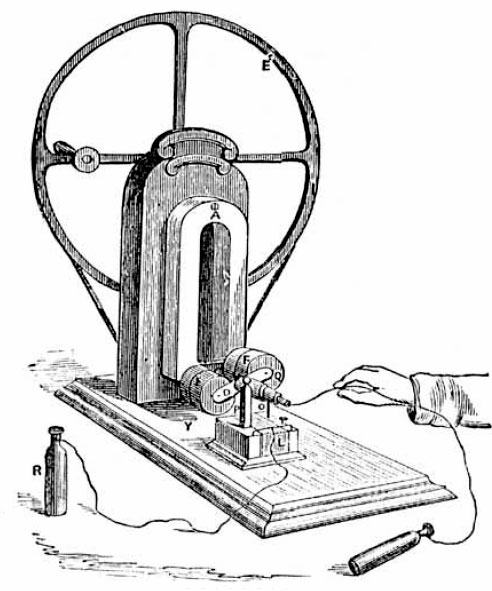
Fig. 1.
A 19th century sketch
of a Clarke Machine,
an electric generator
which applied a strong voltage to anyone holding the two foreground
rods.
MYSTERIOUS
ENERGY
Venders of "mysterious energy" devices had a field day with these
machines. They cane up with more and more bizarre gadgets, belts
that gave the wearer electric shocks to relieve back pain, weird
Tesla and Oudin coil contraptions that bathed people in
showers of high frequency sparks, magnetic and electric jewellery
and so on.
A simple internet search will show that this kind of
weirdness thrives as much today as it did then!
It was only a matter of time before it became obvious to anyone
other than hard core fanatics that these kind of devices were at
best useless and in most cases seriously dangerous. Amidst ever
mounting calls for regulation, the medical establishment started to
firmly entrench itself against this kind of quackery and eventually
succeeded in slowing the sale and development of these devices.
Unfortunately this was achieved more
through suppression and intimidation rather than education.
NEW AGE OR OLD
AGE?
Although there was a steady background trade in electro therapy
devices that continued, most people were unaware of it and it was
only in the 1960s when "new age" solutions to everything appeared
that it took off again. Ironically the "new" age material is far
from new!
But the excesses of the late 19th and early 20th century had taken
their toll. The medial establishment was now mote vigilant than ever
and ruthlessly determined to stamp out quackery. Unfortunately, this
literal counter-reaction had the effect of reinforcing the idea that
conventional medical techniques were the only ones worthy of
consideration and that any mainstream qualified doctor new better
than anybody else, resulting in its own semi-fanatical mentality.
And nobody can deny that many doctors today still show signs of this
kind of attitude and are quick to condemn any alternative therapy
that they know nothing about.
SUPPRESSION
The worst side effect of this attitude was the suppression of
serious research into these therapies whilst many serious theories
of the time appear ridiculous in the light of present day knowledge,
at the time they deserved a better reception than they got. And, of
course, the very real and compelling results obtained by many
serious researchers were also ignored.
One or two of the old therapies have actually crept back into
medical favor. But only after being introduced slowly and cautiously
by conservative researchers who So lb wed the proper protocol; of
placating the medical establishment.
what is more startling, however, and widely unknown, is that amongst
all the snake oil and quackery of the old electrotherapies were a
few gems that did not just seem to have a sound medical basis or
benefit to them, but might potentially surpass the achievement of
the best modern therapies in curing major diseases.
The article concentrates on one of them, a fascinating story about a
potential cure for nearly all diseases that is a scientific
detective story in itself, including, if it is to be believed,
blackmail, intimidation, government conspiracies, arson, vandalism,
theft, bribery and murder.
It would make a great X-files plot but
is truth really stranger than fiction?
A QUICK
DISCLAIMER
whilst I have tried to verify everything in this article that I can,
the lack of objective material has meant that I have had to rely on
second hand sources for a lot of material.
I have not personally
witnessed some of the effects claimed and present them here solely
as a matter of interest.
ROYAL RAYMOND
RIFE
Our story sorts with a man called Royal Raymond Rife pictured on Fig
2 (1960). Rife was not the first to experiment in this field, but
his alleged results remain the most intriguing.
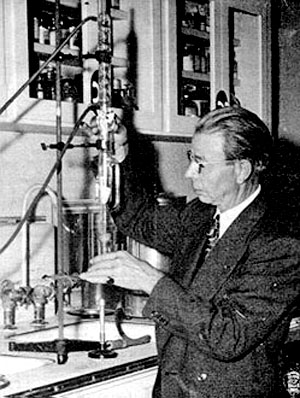
Fig.2
Royal Raymond Rife in
his laboratory 1961
His history is sketchy at best and is
mainly reconstructed from his own notes, newspaper reports and
anecdotes of his associates. Rife was born on 16 May 1888 in
Elkhorn, Nebraska USA. No records remain of his early history (as
far as I am aware) but his work became widely known around 1929.
In 1913 Rife was in Germany and was awarded an honorary PhD by the
University of Heilderberg.
During the course of the next seven
years he supposedly spent further time in Europe performing work for
the US Government and during this period he worked for a time for
the Zeiss optical company. It is claimed that he was trained by Carl Zeiss himself. He later became famous for his development of
advanced optical micro-scopes. By 1920, he ended up living in San
Diego, California.
From his own lectures. Rife says that around 1920 he first became
interested in the biological effects of electromagnetic fields and
their possible therapeutic effect and from that point developed the
microscopes to observe the effect of electric phenomena on bacteria.
Rife had certainly been influenced by earlier theories and machines.
However, the microscopes were the key to his later research and so
make a good starling point.
THE
MICROSCOPES
Rife was determined to develop an optical microscope with
unprecedented magnification and resolution. He proceeded to look at
the problems associated with high magnification microscopy from a
unique angle. There are quite a few problems associated with
building a high resolution microscope, one of the most important
being the light itself.
Purely theoretical work of the time indicated that optical
resolutions beyond about 20,000 times were impossible because of
limitations imposed by the wavelengths of the light itself and
effects such as diffraction etc. Also the amount of light that could
be focused into an objective at high magnification was limited i.e.,
the area being looked at is so small there isn't much room for the
light to get in!
Vibration was another problem, even modern electron microscopes
suffer badly under ambient vibrations, because an otherwise
imperceptible movement becomes all too obvious at high
magnification, as anyone who has used a modern zoom camera lens will
know. Finally, there is the question of how one is to stain the
specimen to make it visible.
To expand on that last point it is usually necessary to apply some
sort of stain to any (optical) microscopical specimen, because many
microscopic cells etc, are basically transparent at high
magnifications and very little detail can be seen.
A stain, however,
is just a chemical dye of some sort, and unfortunately since its
uptake cannot be precisely controlled, the stain may not properly
penetrate the specimen and may even collect in clumps. So under a
high enough magnification the stain itself appears as a series of
lumps or spot that do not reveal anything much about the specimen.
Furthermore, the stain itself, being a chemical, may kill the
organism under study.
POLARIZATION
Rife decided therefore that he had to dispense with die stain. But
how can one see die specimen without a stain?
The first obvious
answer lay in polarized light.
The theory of polarization is quite simple. Light is an
electromagnetic wave, it consists of an oscillating electric field
in one plane, with a corresponding oscillating magneto field in
another pane at right angles b de first.
Normal light consists of a mixture of such waves that traveling with
their electric and magneto fields oriented at arbitrary angles
relative to each other. Polarized light on de other hand is light in
which all the waves have their electric and magneto fields in the
same planes.
Fortunately, polarized light (or any electromagnetic wave) is easy
to produce. All you need is some sort of fine grating in which de
spacing of the rails is less than de wavelength of the light itself.
The waves that have their electric fields lined up with the spaces
of the grating pass through, the ones with their electric fields at
an angle are blocked by the glaring in proportion to the angle, at
90░ all light is blocked. This is the principle of polarizing film
and sunglasses, which are simply fine gratings of this type.
Polarized light is useful, because if you pass it into a compound or
specimen, chemicals, stresses or density changes in the specimen
itself cause the rotation of the incident plane of polarization. By
comparing the variably rotated output from the specimen with a fixed
polarizing filter, different rotations appear as different shades,
and in this way you can see the density changes, stresses or
different chemical structures as shades of light.
Incidentally, this technique has been used for many years to
identify specific chemical compounds and is the basis of the
designations given to aminoacids and complex organic molecules i.e.
When you see something like L-arginine or D-trypophan (both amino
acids), the L and the D refer to Levorotatory and Dextro-rotatory
respectively, polarizing molecules that twist light to the left (levo)
or right (dextro).
FLUORESCENCE
Rife rook the reasoning still further. Not only did he decide to use
polarized light, but he also wanted to avoid the limitations of
backlighting a tiny object. It was much better if the object could
be made to fluoresce in its own light or reflect the incident light.
Most biological specimens would fluoresce or reflect, but only in
ultra-violet or other invisible light ranges. And this depends on
their chemical structure.
So he hit upon the idea of illuminating the object with two
polarized beams of monochromatic light in the UV range that would
heterodyne each other and the result of which would be fluorescence
or reflection in a visible range. It would be the differences in the
wavelengths of two or more illuminating sources that would determine
the output.
By means of a complex set of polarizers and rooting prisms, Rife
developed a way of making any biological sample fluoresce in such a
way that its internal structure was clearly visible.
He didn't need
a stain, the light itself became the stain. So in this way one type
of bacteria, for example, would appear a specific shade of blue,
another red, and so on. The actual color of the resulting "light stan" itself gave a lot of information about the chemical structure
of the specimen under study and the polarization helped distinguish
fine structural differences.
After a lot of development work, around 1929, Rife finally produced
a prototype of what was later on become known as the "Universal
Microscope" which used the above principle. Not much is known about
the early prototypes but they reportedly succeeded in producing
unprecedented magnifications, supposedly up to 60,000 times in some
cases. This kind of magnification is comparable to a modem day
electron microscope.
The photograph in fig.3 is of one of the later
Universal Microscopes and shows just how complex these instruments
were.
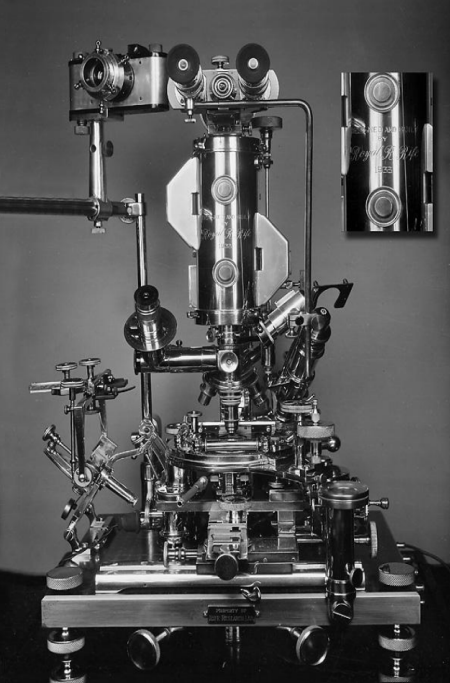
Fig. 3.
One of Rife's
"Universal Microscope"
These optical microscopes had one major
advantage over the modern electron microscopes They allowed the
study of live specimens.
An electron microscope operates in a vacuum
and bombards the specimen with high energy electrons; not much can
survive that!
BEAM RAY
MACHINE
Now that Rife could clearly see bacteria and cells using his
microscope he began experiments in which he exposed the samples to
various electric and magnetic fields. He then discovered that he
could make bacteria and single-celled organisms react to the fields.
Curiously, static fields had little obvious effect, but alternating
or pulsed fieIds caused dramatic changes depending on the frequency
he applied. Each different type of bacteria etc., appeared to
respond to one specific frequency, and in particular, that frequency
ultimately caused the destruction of the organism.
The effect which modem researchers have
duplicated, is very interesting. Supposedly, as you approach the
critical frequency of a bacterium for example, it appears under the
microscope to have what might be best described as a "seizure". The
bacterium changes shape or becomes agitated.
A typical example
(reported by a modem researcher) e where a rod-like bacterium
"seizes" into a "C" shape as the critical frequency is approached.
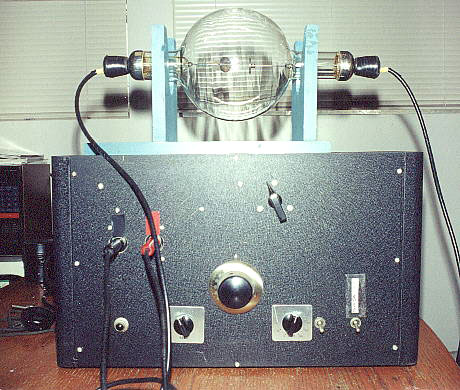
An original Rife
Machine, manufactured in San Diego, California, for an unknown
doctor.
Exactly how this unit
operates is at present not known.
The frequency range of the effect varies
with the specimen and the intensity of the field seems to become
pronounced within five or six Hertz of the critical frequency.
If
you give the specimen a short burst of electromagnetic energy near
the critical frequency it seizes and then usually recovers after a
few seconds.
If, however, you proceed to expose it to the critical
frequency, it literally explodes.
SELECTIVE
DESTRUCTION
Rife repeated his experiments with thousands of samples and
reproduced the same effect every time. What was even more
interesting, however, was that he was unable to find any frequency
that would cause human (or other mammalian) tissue cells to explode
in the same way.
The implications were profound. He had seemingly found a way to
selectively destroy bacteria and other pathogens without damaging
human cells. If this method could be applied to alive human patient
he could potentially eliminate a specific species of invading
bacteria and thereby cure whatever disease that bacterium caused in
the patient.
His first task was to catalogue the critical frequencies that
destroyed specific bacteria. He reasoned that the effect worked
through simple resonance and that the bacteria were shattered by a
specific frequency much tike a wineglass when it is exposed to a
specific high pitched sound.
So he started compiling a list of what
he called the Mortal Oscillatory Rates of specific pathogens
(MORs for short).
MODULATED
EMISSIONS
At the same time he wanted to refine his equipment to produce the
requisite electromagnetic fields. He commissioned engineers to build
a device that would emit a field he could tune. He was convinced
that light was an important factor and so he wanted the tuneable
device to produce light as well as other forms of radiation.
The development of the device unfortunately is not documented. But
the result was that the engineers ended up with an X-ray tube which
was filled with low pressure helium gas (a normal X-ray tube has a
vacuum) driven by a powerful radio frequency transmitter that caused
the gas to ionize and conduct current. The MOR was men created by
quenching the carrier at a lower modulating frequency. So the
original MORs actually consisted of two parameters, a earner
frequency and a modulating wavelength.
The end product became known
as the "Rife Beam Ray Device". It allowed Rife to expand upon his
experiments.
Rife started conducting lab tests using live animals. Most of his
notes were later destroyed and very few remain. But he clearly
documented that he was able to apparently cure the animals of
specific infections with only short exposures to the beam ray
device.
We may never know exactly how many experiment he performed, or all
of what he found due to the destruction of his notes. But his
associates later told of literally tens of thousands of experiments
he performed and that he became obsessed with his work, spending
days at a time without sleep, tuning the device and cataloguing
effects.
His surviving research papers also show
evidence of meticulous work.
A CURE FOR
CANCER?
Rife became obsessed with the idea of curing cancer. He found from
his experiments that cancerous tumors in animals shrank and even
disappeared at certain frequencies.
But his observations showed that
the tumor cells did not explode like the bacteria. Something was
killing the tumor cells, but in a different way.
He then turned his attention to viruses. At that time little was
known about viruses. The word virus itself is derived from one of
their properties, "filter passing". A virus by definition was some
infective agent that was so small that it could pass through a
filter that would block bacteria and other pathogens.
After thousands of further experiments. Rife finally announced that
he had isolated the 'filter passing form" of an infective agent that
would reliably induce cancer in any animal it was injected into. His
conclusion was simple: cancer is caused by a virus and the machine
could destroy viruses as effectively as bacteria, ergo, he could
cure cancer.
At this point it is worm mentioning that although Rife isolated the
cancer pathogen, mere were other researchers in the 1920s, notably
Thomas Glover and M. J. Scott who had also done so,
and probably earlier man Rife - although Rife was probably the first
to actually see the agent with his super microscopes.
In the light of this revelation the tumor cell results became clear.
The machine did not directly kill tumor cells. It killed the virus
that was infecting the tumor cell, and when the virus died it
decomposed into a mixture of chemical poisons that effectively
poisoned and killed the host cell.
The dead tumor cells were subsequently
reabsorbed and digested by the host animal's immune system.
INTERMEDIATE
SIDE EFFECTS
There was a further implication to this. Rife had noted that when he
"cured" animals of various infective agents they often became more
ill for a short time after exposure to the beam ray but rapidly
recovered He reasoned that the destruction of the infective
pathogens always released poisons (which were normally inside the
infecting organism) into the animal's body and blood stream and that
the illness was caused by the effect of these poisons.
Since these poisons are often the very same chemicals that are
responsible for the symptoms of a particular illness in the first
place, it was therefore not unusual to see a worsening of symptoms
after exposure that rapidly improved as the body disposed of the
toxins.
This effect is well known in medicine
today, it is known as the
Jarisch-Herxheimer reaction
and it was
originally recorded in the antibiotic treatment of syphilis.
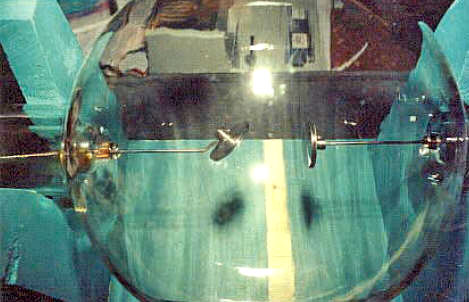
The large tube for
the Rife Machine was made in Los Angeles.
Ultimately, Rife succeeded in
identifying two different viral agents that caused cancers. One that
caused carcinomas (cancers of covering and lining membranes) and one
that caused sarcomas (cancers in bone, connective tissue or muscle).
He called these two agents the BX and the BY cancer viruses
respectively.
PLEOMORPHISM
Rife also found direct evidence of pleomorphism. Ever since
the theory was proposed by Antoine BÚchamp (the forerunner of
Pasteur and probably the true discoverer of microbial infection) in
the 19th century, it had been the subject of much controversy.
To
put it simplistically, it stated that every pathogen had multiple
developmental cycles with different forms in each cycle i.e. a
simple bacterium can transform itself literally into a viral
equivalent (or vice versa).
Rife insisted that he had observed that each bacterial pathogen had
a corresponding viral form, and, depending on the mixture of
proteins that the bacterium digested, it could transform reversibly
into its viral form and back to bacterial form. He mentioned this in
various research papers and concluded that mere were only about 10
different classes of pathogens that were responsible for nearly all
diseases, and even that it was possible for any pathogen in one
class to transform into another pathogen of the same class.
For example, Rife believed that E. Coli, a common bacterium found in
most water supplies. Was the bacterial form of one cancer virus. It
would only produce cancer causing effects in a weakened organism
with a specific chemical balance that made it revert to viral form.
Whilst discredited at the time, modern researchers are finding
increasing evidence that supports the theory of pleomorphism.
It is certainly accepted today that some cancers are caused by viral
agents, a theory that was resisted in the 1920s. The "discoverer" of
the first officially recognized cancer virus in the late 1940s,
Virginia Livingston, his results, as well as those of Glover aid
Scott.
As far as I know she gave some credit to the 'Glover's
theory" but Rife is never mentioned.
THE END TO ALL
DISEASE
During this time Rife had periodically released information to the
press about his work.
He had described and demonstrated his
microscopes several times and had received enthusiastic reviews from
doctors and researchers who had been allowed to use them.
On 3 November 1929 his work was featured
on the front page of the San Diego Union newspaper, as an article
about his microscopes.
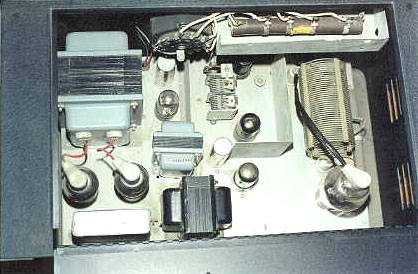
Interior of the 1947
Rife Machine
Numerous other articles followed around
this time, including at least two articles in the LA. limes. He had
also mentioned his work on electromagnetic effects and that he hoped
ore day to be able to cure diseases like cancer, although it is
clear that most of the reporters didn't understand the implications
of what he was saying.
By 1931, Rife had announced his results to various doctors and
university medical departments. He was visited by a stream of
eminent doctors and researchers, most of whom enthusiastically
endorsed his work. One of Rife's supporters was Dr Millbank
Johnson, president of the Southern California branch of the
American Medical Association and one of the board of directors of
Pasadena Hospital. Another was Dr Arthur Kendall, Director of
Medical Research at Northwestern Medical School in Illinois.
On 20 November 1931, Johnson arranged a banquet for Rife at his
estate in Pasadena California, which was attended by 44 of the most
eminent medical personnel of the day and at which they honored him
as the man who had found '"The End to All Diseases".
From this point on the story takes a twist. Many incidents referred
to are documented and historically verifiable but are the subject of
great controversy.
Also the chronology is occasionally confused.
A CLINICAL
TRIAL
In early 1934, Johnson rented premises in San Diego for Rife to
begin clinical treatments. Under his instructions, the University of
Southern California arranged formal clinical trials of the Rife Beam
Ray device.
They appointed a special committee of top doctors to
oversee the project including, apart from Johnson and Kendall:
-
Dr
Rufus Klein-Schmidt (President, University of Southern California)
-
Dr Edward Kopps (Metabolic Clinic, La Jolla, California)
-
Dr George
Fisher (Children's Hospital, NY)
-
Dr Kad Meyer (Hooper Foundation,
San Francisco, California)
-
Dr Whalen Morrison (Chief Surgeon, Santa
Fe Railway)
-
Dr George Dock
-
Dr Alvin G. Foard, a pathologist
Sixteen cancer patients from the Pasadena County Hospital
volunteered to be treated with the machine.
The brief was for the
patients to be treated at Rife's clinic in San Diego and after three
months the doctors would perform an in-depth examination of any of
the surviving patients at that time. Rife reportedly treated the
patients with three minute exposures to the beam ray device at file
career frequencies once every three days.
Initial daily treatments were suspended due to extreme
Jansch-Herxreimer reactions. At the end of three months, however,
all the patients were still alive and were examined.
The doctors were amazed to pronounce that 14 of the 16 showed no
signs of cancer and were pronounced clinically cured. The remaining
two went for further treatments.
Rife reasoned that maybe they were infected with a mutated form of
the cancer virus and made some slight frequency adjustments. Four
weeks later the remaining two patients were examined and also
pronounced clinically cured The results were stunning, it was a
major breakthrough
There is some discrepancy in the accounts of what happened next, but
the most likely explanation is that the members agreed to do further
work before publicizing the results.
CONFLICT
BEGINS
Johnson then introduced Rife to Dr Mildred Schram of the
International Cancer Foundation in Philadelphia. However, on
hearing of the work Schram allegedly made demands for experiments
that Rife insisted would not and could not work Following much
argument; he eventually refused to have anything further to do with
the foundation Schram supposedly admitted years later that Rife had
been right.
In the meantime (1935) Johnson had set up a clinic in Los Angeles to
beat people using the beam ray device and Kendall and others were
continuing experiments and treating people with it.
In 1937, the
medical committee who oversaw the clinical trials ended up arguing
over when and how they should release the results with no actual
decision ever being reacted. By now they had plenty of evidence to
support Rife's claims but they found themselves pressured by the
medical authorities and feared that they would not be believed
A press release went ahead however, and on Friday 6 May 1938, the
San Diego Evening Tribune published a front page article entitled
"Dread Disease Germs Destroyed by Rays, Claim of S.D. Scientist".
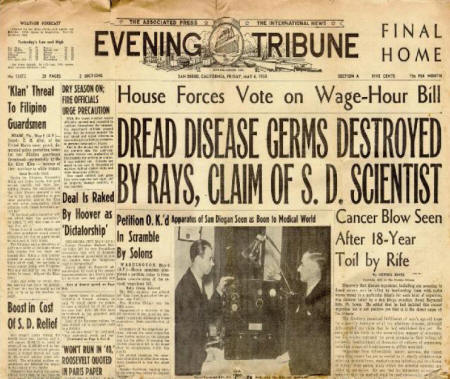
However, the clinical trials were rot mentioned and Rife was
cautious not to claim that the device represented an absolute cure
for cancer.
CONSPIRACY
THEORY
During fids time, a new player emerged.
Dr Morris Fishbein was
editor of the Journal of the American Medical Association between
1924 and 1949. However, Fishbein was a very rich and powerful man
who by that time owned allthe stock of the AMA and had extremely
powerful political connections. Fishbein approached Rife with an
offer to buy the exclusive rights to the beam ray technology. Rife
refused.
The details of the offer are unknown but Fishbein had made similar
offers to other inventors of medical technologies claimed to cure
cancer. In ore case Fishbein made an offer to the creator of a
herbal cancer cure called Harry Hoxey in which Fishbein would
receive all profits from the invention for nine years and
thereafter, at Fishbein's discretion, he would pay 10 per cent of
future profits to Hoxey.
When Hoxey refused, Fishbein effectively
destroyed him Hoxey was allegedly arrested 125 times in 16 months at
Fishbein's instigation The charges never stuck but Hoxey was ruined
Fishbein then did the same to Rife. AMA officials started visiting
doctors who were using Rife's machines and informed them they would
be struck from the medical register if they did not stop
immediately. Many gave in and surrendered the machines to AMA
investigators or allowed the machines to be destroyed. Others held
out aid refused Marty were arrested or had equipment and notes
seized and destroyed by FDA (Federal Food and Drug Administration)
agents.
Fishbein refused to allow publication of any reference to Rife's
work in the AMA journals and also supposedly pressured other medical
journals insisting that they should not publish anything about
Rife's work because it was all a fraud. A number of doctors actively
opposed fids, including Johnson.
But many of the doctors who had
attended Johnson's banquet for Rife in 1931, fearing the loss of
their medical licenses, started denying that they had ever heard of
Rife, even though marry had been photographed with him at the
banquet.
BEAM RAY
CORPORATION
By this time, Rife had established his own company to market the
device. The corporation became known as Beam Rays Inc. However, in
1939, an engineer called Philip Hoyland, an employee of the
company, brought a lawsuit against Beam Rays Inc., claiming that he
and not Rife had invented the machine and that he had developed the
initial theory that was now claimed by Rife,
Despite the fact that he had only joined Rife around 1937 and Rife
had published details long before that.
Another factor that emerged at this time was that there was some
difference between Rife's original machine and newer Hoyland
variants that the company had been shipping. Rife's original machine
created the MOR frequency using a variable carrier wave which was
then modulated with a super-regeneration wave at other frequencies
(ranges of 15kHz to 11MHz appear in Rife's lab notes).
Table 1 gives
carrier frequencies in kilohertz and super regeneration wavelengths
in meters, compiled from his original lab notes.

The MOR frequencies studied by Rife were
mostly in the hundreds of kilohertz to megahertz range.
The details
of the difference between the original Rife and Hoyland machines are
unclear, but Rife complains in a letter of 14 May 1939 to Dr Goran,
head of the London School of Tropical Medicine about
Hoyland's machines:
"I spoke only Friday Evening to a
Mr. John Chanblin, a radio man now connected with Beam Rays sic,
about the redesign and building of a device according to the old
original Rife Ray principles; as the present instrument has been
so deviated away from that old principle that it is nowhere near
the same
"I know nothing about the experimental machines you have, as I
was never even asked to see them or to pass on them in any way
before they were shipped to you. But Henry stated in one of his
last letters that he had tried one of them on a culture of his
bacteria and it had jailed to do the work I would consider from
that, that those devices which you have are merely working on a
harmonic and not a true frequency; and in our research, on
electronics, we definitely know that there is no possible way of
controlling electrical harmonics of a frequency."
Nobody knows why Hoyland started a
lawsuit he could not possibly win, or why he produced non-working
Rife machine variant, except that it is alleged that Hoylands legal
costs were funded by the owner of a mayor pharmaceutical company.
Rife's invention was potentially lethal to the multi-billion dollar
pharmaceutical industry. Rife eventually won the lawsuit but the
cost bankrupted Beam Rays Inc., putting it out of business.
And Rife's reputation had been damaged
by inferior machines that had been shipped out by Hoyland using
Rife's name.
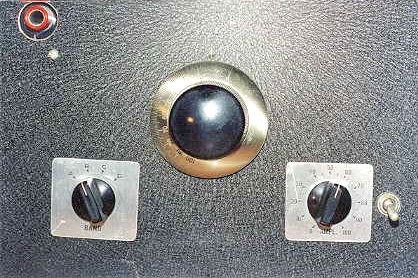
Front panel of the
1947 Rife Machine.
The knob on the feft
changes the frequency band and the knob on the right changes the a
amplitude of power
After this Rife started drinking heavily
and became depressed and discouraged
VANDALISM AND
ARSON
Around this same time Rife's laboratory was subject to a spate of
thefts, his microscopes vandalized and finally, it was burned to the
ground (and most of his notes destroyed) in an arson attack. Nobody
was even caught or prosecuted for it. Another doctor, a Dr Names who
had set up an independent laboratory and confirmed some of Rife's
results was killed in a laboratory fire and all his notes and
research lost.
A third laboratory working on confirming Rife's work,
the Burnett Laboratory, also mysteriously caught fine and burned to
the ground with all research destroyed.
In 1940, two other doctors who had supported Rife, Cooperson and
Clayton were raided by Federal officers who confiscated their
equipment and notes. Later each was found dead, supposedly having
committed suicide by poison.
In 1944, Johnson arranged a press conference and let it slip that he
would announce publicly the clinical results and that the cure for
careen had been round. There are allegations that Johnson had
already been approached by "representatives of the pharmaceutical
industry" who offered him money to suppress information about Rife's
work.
Supposedly he refused. He had also certainly been pressured by Fishbein
The night before the press conference, however, Johnson died
suddenly and mysteriously and all his notes were pronounced as
"lost" by the executors of his estate. His death was recorded as
"accidental death" although I have no details. There are claims that
his body was later exhumed by FBI investigators who concluded that
he had been murdered by poison
Dr Arthur Kendall one of Rife's most prestigious and influential
supporters suddenly accepted an unprecedented pension of $250,000 to
retire to Mexico and effectively disappeared from the scene. George
Dock, another of Rife's clinical team, and also highly respected and
influential, also took a huge and unprecedented gratuity to retire
early.
Many of Rife's supporters were convinced this was the work of drug
companies who were anxious to suppress a technology that would make
virtually all drug treatments obsolete.
Rife was hounded by the
FDA (Food and Drug
Administration) and the
AMA (American Medical
Association). He was unable to practice
without official intervention and continued a steady decline into
alcoholism. This didn't stop him, however, trying to continue his
research.
In the early 1930s Rife teamed up with a man called
John
Crane under the auspices of a new company (owned by Crane) called
Life Labs Inc.
LIFE LABS INC.
Here the record becomes confused again Crane worked on the
development of several new machines. One in particular was quite
different it used a pad when had to be placed in contact with the
body.
Crane claimed that he and Rife had developed the machine
together, and Rife was certainly associated with the company because
he wrote letters on its behalf. But apart from Crane's statement
there is no direct evidence to suggest that Rife developed or
endorsed the pad machine. Because of this there is some confusion as
to what constitutes a real "Rife Machine" because some people
(particularly those selling such devices) claim the former and
otters the latter
Users claim both are effective, but the original plasma device has
the advantage that it can be used to treat the whole body (or even
several bodies at once!) since it has an effective operating radius
of around 20 to 30 feet (6m to 9m) depending on power level and does
not require any body contact.
Modern researchers who made contact with Crane studied circuit
diagrams that Crane gave them and concluded that not only could the
circuits not work as they were, but Crane did rot seem to know very
much about electronics. However, some of the circuits did work with
minor modifications, indicating that Crane had probably taken the
diagrams from prototype notes of other engineers who had worked for
him
Crane's involvement led to a second source of confusion Crane
published lists of MOR frequencies which were all in the low audio
range Clearly there was a big difference between Crane's frequencies
and Rife's.
A popular list of frequencies (Table 2) which was
obtained from Dr Robert P. Stafford MD, who is claimed to have used
a "Rife machine" (probably a "Crane machine") for clinical trials
between 1957 and 1963 and which is often advertised as Rife's
original frequency list, is in fact a copy of a document he received
from Crane.
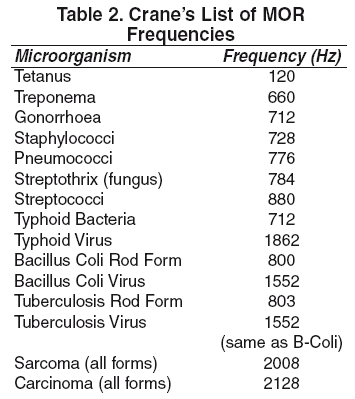
Interestingly, these frequencies have
been claimed to be effective for Rife type plasma machines by modern
researchers, but they are obviously not Rife's original frequencies.
In 1971 Rife was admitted to hospital, details are unclear, but I've
seen accounts that attributed it either to a car accident or an
alcoholic binge.
Either way it is reported that he died following
accidental injection of a massive overdose of Valium.
THE LOST
TECHNOLOGY
Following his death, Rife's work was forgotten. Most of his original
notes had been lost in the fires and/or supposedly destroyed by
AMA/FDA agents. But some of his associates remained alive,
particularly Crane who wrote a book about the work (supposedly very
long winded and not very technically accurate according to those who
have read it).
Crane was arrested numerous times for promoting Rife's work and spent three years in prison for it. And there were
still a few old doctors who claimed to have been successfully using
the device for treatments (mostly in secret) over the years and
still had working machines.
Even Rife's microscopes were forgotten except for odd articles of
historic interest. For example, a 1944 report from the board of the
Smithsonian Museum stating basically that the microscope worked and
that Rife's results had been validated. The author, Dr Raymond
Seidel reportedly survived a subsequent assassination attempt in
1945, after which he refused to mention Rife ever again.
An original Rife microscope (which, however, had probably been
tampered with by Hoyland) resides today in the Science Museum in
London, unfortunately broken and not on display. The microscope was
formerly used at the London School of Tropical Medicine, but
following a dispute between Dr Gonin, the British doctor who used it
and Beam Rays Inc., (probably Hoyland), the machine was supposedly
smashed by a mysterious man who arrived from America.
It was later
donated to the Science Museum by Dr Gonin's family after his death.
Even the newspaper reports were hard to come by. Some of the
newspapers told researchers that they had lost the specific editions
with reports of Rife's work, note only those editions.
Luckily there were people who did still
have copies.
MODERN REVIVAL
The whole matter was revived suddenly around 1986. As far as I know,
the recent efforts appeared after a book about Rife called
The
Cancer Cure that worked was written by an author called
Barry Lynes.
Whatever the cause, several modern researchers tried to build
duplicates of the original beam ray devices, most of them succeeding
in producing allegedly bio-active machines, but none of them truly
original.
Eventually these modern researchers managed to make contact with the
few surviving doctors who had worked with Rife and his machine and
slowly the details began to emerge.
Although Rife had used a variable carrier wave in his original
prototype machine, later models of the machine used by other doctors
used fixed carriers with amplitude modulation. It is not known
whether these machines were Rife's, Hoyland's or Crane's.
The
modulation was a square wave pulse with fast rise time. Calibration
and measurement of dial settings on the old machines revealed that
the active frequencies of modulation were all in the low audio range
corresponding to the lists published by Crane.
One explanation of the discrepancy between Rife's original notes and
the derived frequencies may be explained in terms of harmonics. The
higher harmonics of a square wave pulse represent odd multiples of
the fundamental frequency (Fourier's theorem) and so the square wave
produces a range of different (higher) frequencies for any given
fundamental frequency.
Another theory is that the microorganisms have more than one mortal
frequency. There is some support for the latter idea in letters
written by Johnson which indicate that at one stage, he and Rife
stumbled on to a "super-frequency" which would kill almost any
microorganism. Unfortunately this frequency was never recorded.
The modern researchers took various approaches to reproducing the
machine. Some used old X-ray tubes filled with low pressure helium
or argon, others had tubes made, and some even made them themselves.
BARE MACHINE
One of the most popular recent incarnations of the Rife machine was
developed by a Dr James Bare.
Bare took a minimalist approach to the
problem and modified a CB transmitter and power amplifier to
increase the bandwidth and to drive the tube at a carrier frequency
around 27MHz. Using the audio input of the transmitter to introduce
the modulating pulses, he then proceeded to perform experiments to
verify Rife's work.
I don't know exactly which experiments he did (I haven't read his
book) but he claims that the device worked just as Rife described
and he has had photomicrographs taken which allegedly show the
device destroying single-celled organisms like Blepharisma.
You can see the below video:
Bare also sells
videos of other experiments.
The book of Lynes, and the work of Bare and others caused a virtual
explosion of activity in this field. Today, it is estimated that
nearly 5000 people have Rife machines (or at least modern
equivalents) in active use and an enormous amount of anecdotal data
has been compiled through amateur efforts to cure specific diseases.
Although many of the anecdotes are purely subjective, a great many
claim to have been verified by doctors and some contain considerable
clinical detail.
It is not unusual to see comments in which users have stated
definite biometric measurements of their own diseases both before
and after treatment with the device. One thing is overwhelmingly
clear a large number of people are convinced that the device works.
Fantastic as it may seem, many people claim to have experienced
improvements in cases of the most dire diseases, such as cancer and
even AIDS.
what is even more interesting is the number of people who have
reported relief from the symptoms of diseases that are not known to
have any viral or bacterial component, or the cause of which is
still officially unknown.
The devices have also allegedly been
widely and successfully employed in veterinary practice as well,
implying that the results are not simply due to the placebo effect.
FREQUENCY
LISTS
As a result of all these efforts, there now exist a number of
frequency lists (all freely available on the internet) which give
specific treatment frequencies for just about every disease
imaginable.
Others are classified by the microorganism species.
Another interesting point worthy of note is that whilst Rife's
original work only concentrated on MORs for bacteria and viruses (he
knew it affected yeasts etc., as well), the modern researchers claim
to have found MORs for yeasts and moulds, various protozoa-like
amoebas, worms and parasites like flukes and even some insects.
The consensus seems to be that low frequencies are deadly to simple
organisms.
The more complex organisms like mammals (at first sight,
see comments later) seem to be immune to these frequencies.
SIDE EFFECTS
Advocates of the machine are very keen to point out that there do
not appear to be any negative side effects (apart from the
inevitable Jarisch-Herxheimer reactions) and so far nobody claims to
have identified any bad or dangerous frequencies.
My own feeling is
that this is not strictly true and there is ample evidence of
possibly bad frequencies.
However, to someone dying of a terminal
cancer the risk is worth the potential reward.
HOW IT WORKS
By now you are no doubt longing to know how does it work? The answer
is that nobody knows for certain.
Although there are many clues to
be found in modern research into the effects of electric and
magnetic fields on biological systems. Unfortunately, this whole
area of research still appears to be vehemently opposed by the
mainstream medical establishment and very little (compared to other
fields of medical research) serious and rigorous research is being
done.
At first sight it appears that the electromagnetic waves emitted by
the plasma tube of the device are inducing fields or currents into
body cells. However, many researchers are quick to point out that
putting the device inside a Faraday Cage (which will block all
electromagnetic waves) does not impair its effectiveness.
Nor will a
simple aerial produce the same effect.
PLASMA WAVES?
Some have speculated that the light from the tube is involved, but
once again the device appears to work well with covered tubes.
I
have seen various theories that claim the existence of a mysterious
new type of energy called a plasma wave, but my personal feeling is
that this is too fanciful and there is a simpler explanation.
PATENTED HIV
CURE
At this point I would like to digress to look at some other machines
of a similar nature that may throw some more light on the puzzle
before returning to the question of what is actually happening.
On 14 March 1991, two researchers, William Lyman and Steven Kaali,
at the Albert Einstein School of Medicine, announced to the
First
International Symposium on Combination Therapies that they had found
they were able to inactivate the HIV virus in blood samples, by
passing a tiny electric current (less than 100 microamps) through
the blood itself. A similar paper was published around the same time
by a team in Japan.
The interesting thing here was that they didn't
kill the virus, they just made it inert.
The virus reportedly was unable to penetrate and infect body cells
after exposure. Either way, the result was more or less the same, it
provided a clue to a potential cure. The Einstein team were quick to
file a patent (US Patent 5,139,684) in which they described a
hypothetical device which could be connected to the patient's
circulatory system and in which the blood would pass through a set
of electrodes which would in turn pass a current through the blood,
the "deactivated" blood being returned to the patient's body.
Other
researchers were also quick to confirm that the effect wasn't just
limited to HIV, it worked just as well with other bacteria and
viruses as well.
NEW AGE
DEVICES?
This led to more amateur experimentation.
A host of "new" machines
emerged from various experimenters. I qualify the word "new" because
all of them are just modern rehashes of the old 19th century
electrotherapy machines. They basically fall into two main classes:
those that pass a low voltage alternating current through the body
(ideally across some major artery) and supposedly purify the blood
according to the Lyman/Kaali principle, and others that produce
intense magnetic field pulses.
People who claimed to have tried these devices for the most part
reported that they provided an amazingly rapid relief from symptoms.
Of further interest was the fact that many people reported a
consequent Jarisch-Herxheimer reaction.
To put it simply, if you
kill enough microbes you get a Jarisch-Herxheimer reaction.
SNAKE OIL AND
SNAKE BITES
Vendors (the snake oil and quackery industry is still healthy!),
claim that these machines (which typically produce about 28 volts
peak-to-peak a.c. square waves across the skin for the electric
machines), and magnetic pulsers which work by discharging capacitors
charged up to a few kilo volts into a magnetic coil, have no
deleterious side effects and are completely safe to use.
I am personally skeptical about most of the claims made for these
devices and very much so about the safety of some of them. I believe
that they do provide some of the symptomatic relief that they claim
and not simply through a placebo effect. However, the long term
effect of using these machines has never been properly studied.
Some of these devices are supposed to be frequency dependent, others
not. Although as far as I can tell, the Rife machine still remains
the clear winner.
None of these devices have been accepted by the mainstream medical
establishment. However, many hospitals today use pulsed magnetic
field therapy to speed up the healing of broken bones. This
highlights the hypocrisy of some medical people who on one hand
declare that there is no possible benefit to these kind of
therapies, yet happily use them to heal fractures.
As an interesting aside, there is a modern item of "bush-lore"
widely accepted and used by travelers in certain parts of the world,
and even endorsed by many doctors, that an excellent therapy for
venomous snake bites is to apply a strong electric shock to the site
of the bite which apparently somehow neutralizes most snake venoms.
You can get manuals on how to perform an instant bush cure using the
ignition coil of a car.
It's supposed to work great for Rattlesnake
bites, although I must admit I haven't found this to be much of a
problem in Berkshire!
ELECTROPORATION
Returning to the question of what is happening. I have frequently
seen it suggested that electroporation, or voltage dependent
gating, may account for the effects of electric and magnetic fields
on bacteria. I don't believe this to be the case and I think these
ideas arise from an inadequate understanding of cell structure.
To
explain, let's start by looking at cells.
Bacterial, plant and yeast cells are very different from the kind of
cells found in the human (or other animal) body. Pathogens like the
ones listed earlier tend to have a thick cell wall and an internal
cell membrane that encloses them. There is a major distinction
between the cell wall and the cell membrane. The cell wall is
typically about 200nm thick, and the cell membrane usually consists
of a layer of two protein molecules bonded together and is about 5nm
to 10nm thick, depending on which protein is involved.
A typical body cell does not have the cell wall, it only has the
cell membrane.
Simply put, a bacterium or fungal cell has a coating
many times thicker and stronger than a body cell. See Fig.4.
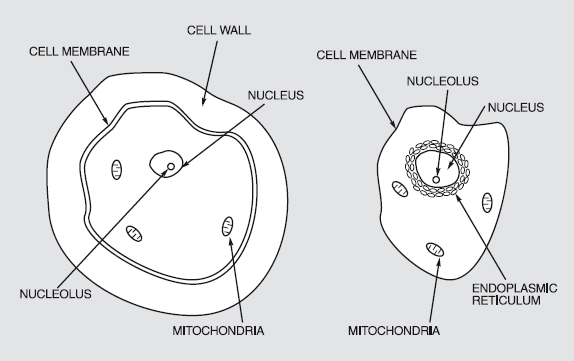
Fig.4.
A
bacterial/mould/plant cell (left) and (right) an animal cell.
Electroporation, an effect often
used by genetic engineers to introduce DNA strands into cells,
occurs in cell membranes.
Cell membranes have natural pores due to
the statistical movement of the molecules that they are made of. The
molecules move about leaving momentary holes. If the movement of the
molecules is increased by electrical stimulation, they tend to leave
bigger (sometimes permanent) holes and the cell membrane becomes
more porous.
A large enough hole will destroy the cell.
VOLTAGE
DEPENDENT GATING
Voltage Dependent Gating (VDG) is a different effect
in which a protein molecule just a bit longer than the width of a
cell membrane, typically helical in shape, tends to burrow its way
through the cell membrane literally like a corkscrew. This creates
what is known as an ion bridge and under the influence of an
electric potential the ion bridge turns on like a switch and carries
ions across the cell membrane.
This mechanism occurs in many
biological subsystems, most noticeably nerve cells.
The theory I have seen advanced for the operation of the Rife
machine is that one or both of these effects results in an ion
imbalance in the bacterial cell (but not the body cell) which
results in an osmotic pressure differential that ultimately causes
the bacterium to blow up like a balloon and then explode.
BALLOONS Vs
FOOTBALLS
But the two effects above both operate on cell membranes (I don't
know if they operate on cell walls) and so it follows logically that
they are much more likely to damage a normal body cell than a
pathogen.
To put it more simply, imagine a bacterial cell to be rather like a
football, and a body cell to be rather like a child's balloon. If
you blow air into both the football and the balloon at the same
rate, the balloon is going to explode much more easily and much
sooner than the football, because the football is thicker and
stronger.
So this explanation is unlikely because observation supposedly shows
the opposite to be happening.
NEW THEORY
If the reports are to be believed, the real explanation must lie in
some electrochemical property that cell walls have that cell
membranes don't.
The answer may lie in what are known as ion exchange membranes
(IEMs for short). The full technical explanation is too long
and complex to reproduce here, but to simplify, a cell wall acts
like an IEM, a cell membrane doesn't. An IEM promotes the exchange
of ions either side of it when an electric potential is applied.
Simplistic ally speaking, I personally believe that the electric
potential induced across a cell wall by an external magnetic field
(or local electric current) causes ion exchange across the cell
wall, which results in profound changes in the chemical environment
of the cell, for example pH (acidity).
Under the influence of such changes, the proteins that hold together
both the cell walls and the cell membranes denature, depolarize or
lose their hydrogen bonding i.e. they change shape from nice regular
helixes into random strands. As such, they firstly lose their
ability to properly participate in the chemical reactions that keep
the cell alive and, secondly, result in the weakening of the cell
wall which eventually ruptures and disintegrates.
This would explain both the Rife exploding bacteria effect and the
Lyman/Kaali bacterial inactivation.
Mild denaturing of the cellular proteins will inactivate the
pathogen's ability to bond to other cells or participate in chemical
exchanges with body cells, a more pronounced denaturing will destroy
the pathogen's cell wall.
I have greatly oversimplified this explanation because molecular
electrochemistry is not an easy subject to master. I hope, however
that I have conveyed a simplistic picture of what may be happening
and why I have doubts about the more conventional explanations.
A CAUTIONARY
NOTE
Having said all that, I must urge caution. Whilst the mechanism of
these electrotherapy devices may have a greater effect on bacteria
etc., than normal body cells, it would be a great mistake to assume
that body cells are never damaged by these effects. Any body cell
relies on an extremely complex system of electrochemical reactions
to operate.
Clearly an electric, magnetic or electromagnetic field applied close
to the body will induce electrical potentials across cell membranes
(and those of organelles) and will inevitably disrupt normal body
cellular electrochemical processes as well as those of bacteria.
Two real questions remain:
-
firstly whether these devices have any
beneficial effect at all
-
secondly whether the gentler devices
like the Rife beam ray machine (as opposed to something like the
magnetic discharge machines) are really completely safe
Of course, a degree of "collateral damage" (to borrow a military
term!) may well be acceptable when you are treating a serious
disease such as cancer.
Undoubtedly existing traditional radiation
and chemotherapy techniques which are commonly used to treat cancer
(and even in some cases antibiotics) do cause serious "collateral
damage" to normal body cells.
Another point to consider is that if you can kill a tumor cell by
exploding a virus inside it, it follows that you can kill a normal
cell the same way.
Up to this point I've been relating stories and theories secondhand.
Now I'd like to just mention some experiments that I've done in this
field. I would like to stress that I am giving this information for
completeness and because it is interesting.
I am not suggesting that
anyone else should try this, it might be dangerous.
SUBJECTIVE EXPERIMENT
As an experiment, I decided to try making a simple machine.
Basically I designed a very simple magnetic pulse generator. I made
a simple driver circuit that accepts square wave pulses from a TTL
input and drives them at about 36 volts with a current capacity of
up to four amps into a 35mH magnetic coil. The resulting magnetic
field is quite intense.
I then hooked the machine up to a signal generator and tuned it to
various known Crane MOR frequencies for common pathogens that most
people have and held the coil near to my body in various places.
Interestingly, I felt nothing at most frequencies but got a
noticeable reaction when I tuned to certain frequencies, for example
464Hz, which turns out to be the MOR for Candida Albicans (a
parasitic yeast that just about everybody has in some degree). I was
suffering from a gastric ulcer i.e., gnawing pain under the ribs
when my stomach was empty, bleeding etc. I also have a hiatus
hernia (weak stomach valve) which for many years has caused
almost continuous indigestion and acid burning.
I normally have to take antacids every couple of hours and certainly
after every meal. Having had no results from any conventional
therapy in the past, I figured I had nothing to lose by trying the
machine. I tried setting the machine to 676Hz, the modern MOR
frequency for Helicobacter Pylori, which is the usual cause of
ulcers.
After about three minutes exposure at 676Hz I felt a bit dizzy.
About an hour later I had a particularly bad attack of acid and pain
which lasted for about two hours. But next morning when I woke up,
the usual pain under the ribs was much less. Later that day I tried
again, this time two six-minute exposures, one at 676Hz and the
other at 464Hz (the Candida frequency).
I discovered that 676Hz makes me feel dizzy and 464Hz gives me
stomach gas. This time I got a much smaller attack of pain but also
this time I got a spate of red blotches on the skin followed by
itching all over, again lasting for about two hours. I figured the
first was a
Jarisch-Herxheimer reaction to the 676Hz and the second
the reaction to the 464Hz.
The next day, I woke up again with hardly any pain at all. During
the whole day I only had to take one antacid tablet which is
unprecedented. After four days of similar treatments all pain had
gone and I was getting no detectable reaction at all to either of
the frequencies. What is more I had no indigestion for the first
time in years and there was no more bleeding. I stopped the
treatments at that point.
At the time of writing it is now nearly three months since I
performed this experiment. I have had no pain, no bleeding and feel
better than I have done in years.
A few weeks ago, I got the symptoms of a mild cold for a couple of
days. The indigestion returned for a day, although not as badly as
before. I tried the machine again, tuning randomly through various
frequencies and looking for reactions.
I got strong reactions at
frequencies which I later discovered were known MORs for Adenovirus
(a common respiratory infection) and also Chlamydia Pneumonia
(also a respiratory pathogen).
Two days treatment as before at the new
frequencies has once again removed all symptoms and the indigestion
is gone.
PLACEBO
EFFECT?
It's not very scientific but I'm convinced it works. If anything it
has convinced me that this whole field is too important to ignore
and the more serious research and experimentation that is done the
better.
Skeptics will, of course, argue that this is a classic placebo
effect, but having tried various remedies over the years without
anything like these results, I believe otherwise.
I also tried a further experiment with moulds. I took a piece of
bread, dampened it and left it out overnight. I then broke the bread
into two similar pieces and put each piece in a separate, sealed,
sterile container. I took one container and exposed it to a range of
different anti-mould frequencies of the magnetic pulser. The first
container was left untouched.
After four days, the containers were compared. The first, untouched
container was full of mould, the second was completely clear.
Since
the only difference between the two was the exposure to the magnetic pulser, I concluded that the magnetic pulser had killed all the mould
spores in the second container.
PULSER CIRCUIT
For anyone interested in doing further experiments, the circuit
diagram of a second, very simple prototype of my pulser is shown in
(Fig.5). The input is a simple TTL square wave at the frequency of
interest.
The circuit consists of two simple
buffer/inverter stages, around transistors TR1 and TR2, to translate
the TTL signal into a larger voltage swing to drive the two parallel
MOSFETs in the output stage, shown combined as TR3, into hard
conduction.
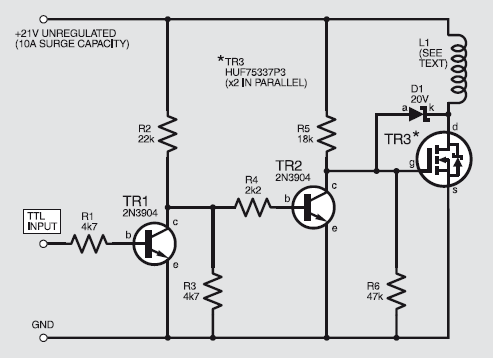
Fig.5.
The author's
experimental pulser circuit.
The MOSFETs are wired in parallel to
increase their current capability and mounted on a big heat-sink,
although they have a very low on-resistance and so the dissipation
of the circuit is low.
The 20V Zener diode, Dl, wired from the drain
to gate of the MOSFETs prevents inductive voltage overshoot and
gives the MOSFETs a very hard switch off edge, which is supposed to
be ideal for bioactive effect.
The power supply is a simple 21 volt unregulated supply (a rectified
15V a.c. transformer with a4700uF smoothing capacitor) but which
needs to have a high surge capacity as the transients generated by
the coil can overload the transformer and rectifier.
The second prototype uses a 200VA transformer and 10A rectifier
which works well. My first prototype used only a 100VA transformer
and died suddenly in a cloud of smoke!
The coil, L1, consists of approx 333 turns of 22swg enameled wire
wound on a plastic former of about 13cm diameter (a standard plastic
waste pipe coupler) in eight layers, across a span of about 25mm.
The turns of the coil need to be tightly wound and well varnished
into place to prevent oscillation and heating in operation.
The prototype coil gets mildly warm in
normal use, about 40░C.
DO NOT TRY
THIS AT HOME!
Again I urge everyone to take care.
I only experiment on myself; the
cardinal rule for me is don't try to treat anybody else. I am aware
of the risks I take and accept them, other people may not be. I also
don't encourage anyone to try this on themselves, but only to
perform proper experiments with microorganism samples with due
precautions under scientific conditions. There is still too much
that is not properly understood about this technology.
I personally believe that the Rife type plasma machine is the safer
option. However, these machines are difficult to obtain and very
over-priced (ready-built). I have
asked a few manufacturers for specs but I've found that many are
unwilling to give proper specifications, and in some cases the
advertising claims are simply
untrue.
If there are any decent r.f. engineers out there (high power r.f.
design is not my specialty) I for one would be interested in a
modern design for a Rife plasma device built from the ground up and
optimized, not just based on modified CB radios. It should also work
with lower carrier frequencies as there is some evidence that
carriers in the range of 3MHz to 11MHz are more effective than the
27MHzCB range.
Currently, I am working on the design of a high accuracy digital
frequency synthesizer that I intend to use for further experiments.
I must add that, despite my opinions, I am not specifically
endorsing any of these devices in any way. I am only presenting this
information as a matter of interest.
OTHER EVIDENCE
Amongst the scientific literature I have discovered there is a
wealth of information as yet not properly compiled together, and
usually buried in incomprehensible technical gibberish. I have seen
research reports which indicate that weak magnetic field pulses at
16-7Hz can stimulate the body into increased production of
T-lymphocytes. I have seen other reports that indicate that other
frequencies inhibit the same lymphocytes.
There are also reports that claim similar effects at various
frequencies that inhibit cancer cell growth and ones that stimulate
it. Most of the current research, however, has focused on the effect
of power line frequencies i.e. 50/60Hz. Most reports indicate that
these frequencies are dangerous, I have not seen any evidence of any
beneficial effects
reported at these frequencies.
One thing that does seem to be confirmed repeatedly by research is
that weak electric and particularly magnetic fields have a most
profound effect on growing cells. The faster the rate of cell
growth, the more pronounced the effect. This implies that any low
frequency magnetic field may be particularly dangerous to children,
and especially to unborn children. Also prolonged exposure to any
low frequency magnetic field may cause VDG and/or electroporation
and consequent cellular damage.
It is now widely accepted by many researchers that any field in
excess of 150nT is likely to have an immediate bioactive effect on
cellular metabolism and much weaker fields may have effects after a
longer exposure.
OFFICIAL
RECOMMENDATIONS
Despite numerous well founded and intensive research studies on the
bioactive effects of l.f. electric and magnetic fields, both the UK
NRPB (National Radiological Protection Board) and the
US NCRP (National Committee on Radiation Protection)
insist that their official position is that there is no proven risk
of adverse health effects from l.f. fields, they are talking in the context of normal domestic
power lines, and on the basis of projected field strengths and
exposures in normal use.
Neither authority is actively denying that l.f. fields have bioactive effects per se, although there is
controversy over the field strengths that might have an effect, and
whether or not the effects are temporary or permanent.
Marry informed observers believe that this is a short sighted view
motivated by political considerations, for example, both authorities
have close ties to power generation companies that obviously would
be reluctant to admit that their product might be dangerous to
consumers.
In the United States at least, this has led to conflict between
various government agencies, for example the NCRP and the EPA
(Environmental Protection Agency).
The EPA has allegedly
petitioned various US government authorities to classify l.f.
radiation as "a possible human carcinogen", but has met with
concerted resistance from the power companies and their lobbyists.
In addition, numerous lawsuits have been filed by consumers and
environmental groups against power generation companies, citing
research and statistical studies that supposedly show a strong
correlation between childhood leukemia and proximity to power lines
emitting l.f. electric and magnetic fields.
The fact remains, that whilst these authorities insist that there is
no proven risk from authority is actively denying that l.f. fields
have bioactive effects per se, although there is controversy over
the field strengths that might have an effect, and whether or not
the effects are temporary or permanent.
The NRPB in the UK has published reports in which it admits that
some strong If. fields might have temporary bioactive effects.
The NCRP is also at the centre of a controversy over a "leaked" internal
draft recommendation of 1995 by its own research teams which makes
various recommendations, citing specific bioactive effects of low
intensity l.f. fields and which concludes:
"Based on available evidence, the committee concludes that it is
desirable to reduce human exposure to electric and particularly to
magnetic fields over the frequency range from near-zero to 3kHz.
This may be accomplished, particularly in areas with frequent and
prolonged human occupancy, by re com men din g an exposure standard
or a set of safety guidelines; or by recommendations that fall short
of establishing either a standard or guideline, but offer guidance
to limit exposure."
FOOD
PRESERVATION
Perhaps the most interesting twist to the whole story comes in the
form of two new reports by the US FDA, the very organization that
tried to shut down Rife.
These latest two reports consider the use
of pulsed electric and magnetic fields for food preservation on the
basis that accepted research shows that pulsed electric and magnetic
fields can kill bacteria, viruses and other pathogens.
These two reports (which are available on the Internet, addresses
later) cite impressive figures for kill rates of specific bacteria
at specific pulse rates of a strong magnetic field. But the
conclusion of the reports is that pulsed fields do not qualify for
approval as a method of food preservation because the mechanism of
action is unknown, and also because of inconsistent results, in some
cases the fields appear to enhance the action of bacteria, in others
they kill them and some appear to have no effect at all.
The interesting conclusion the FDA draws from this is that the
effect is obviously frequency dependent and also is influenced by
field strength, exposure time and the nature of the material
exposed.
This is almost exactly what Rife was saying in the first
place.
MAGNETIC FIELD
REPORT
Here is an extract from the FDA magnetic field report:
Exposure to a magnetic field may stimulate or inhibit the growth and
reproduction of microorganisms.
A single pulse of intensity of 5T to
50T and frequency of 5kHz to 500kHz generally reduces the number of
microorganisms by at least 2-log cycles (Hoffman 1985). High
intensity magnetic fields can affect membrane fluidity and otter
properties of cells (Frankel and Liburdy 1995).
Inconsistent results
of other inactivation studies, however, make it impossible to
clearly state the microbial inactivation efficiency of magnetic
field or to make any predictions about its effects on microbial
populations.
FINALLY
I have deliberately tried to keep this
article simple, trying to find a balance between completeness,
common sense and scientific overkill! I hope that I have at least
stimulated some readers to research this fascinating subject
themselves.
ACKNOWLEDGEMENT
Photographs of the 1947 Rife Machine were downloaded from
http://www.rt66.com/~rifetech/rife.html and reproduced by kind
permission of James Bare.
REFERENCES
-
Ions, Electrodes and Membranes.
J. Kbryta. 1992. John wiley and Sons, ISBN 0-471-93083-6. A
good introductory book on cellular electrochemistry.
-
http ://wwwJvstrings.coriv/quack
Jitm Jeff Behary's Turn of the Century Electrotherapy Museum
A wonderful site with (Ascriptions and many photos of the
plethora of extremely weird, wonderful and hilarious early
electrotherapy devices.
-
Mtp://w ww.mm.org/~quack'.
Another wonderful on-line "quackery" museum with links to
many sites.
-
http://www.rife.org/. Site of
the Rife Plasma Digest, a very good site with scanned copies
of numerous original Rife documents and corresponoence.
-
http://www.il66.com/~iifetech/.
James Bare's web site, lots of information and great links.
Check out the AVI video of the exploding Blepharisma!
-
http://www.rife.de/. The Rife
Information forum Europe, useful links and information about
clinical trials.
-
http patent. Womplex.ibmoi)m/details?patent_nuirf)er=5139684.
A link with eMails of the Enstein team's patent for their
proposed HIV treatment with oetails of numerous subsequent
similar patents.
-
M^:/A'mLcfsaiLfdagov/~comm/iftM>mf.html
FDA Report (2)00) on use of pulsed magnetic fields for food
preservation.
-
Mtp://vm.<rfsaiLfdagov/-comm/ift-pefi╗tml.
FDA Report (2)00) on use of pulsed electric fields for food
preservation.
-
http://www.nrpb.org.uk The
official web page of the UK National Radiological Protection
Board (NRPB)
-
http://wwwjtcrp.com. The
official web page of the US National Committee on
Radiological Protection (NCRP).
-
http://w w
w.microwavenewsx╗nVnerp.html. A link to a copy of the
'leaked' 1995 NCRP Draft recommendations for l.f. field
exposures.
|












